Exhibition dates: 7th September 2022 – 15th January 2023
Curator: Laurie Hurwitz
Boris Mikhaïlov (Ukrainian, b. 1938)
From the series Luriki (Coloured Soviet Portrait)
1971-1985
Hand-coloured gelatin silver print
61 x 81cm
© Boris Mikhailov. Collection Pinault. Courtesy Guido Costa Projects, Orlando Photo
This is the last posting for the year 2022, and what a year it has been… personally, now retired, surviving an appendicitis where they had trouble stabilising me after the operation, and in terms of the world: living with COVID, further destruction of habitat and species, global warming, and the invasion of the sovereign country of Ukraine by a Russian aggressor, and let’s call it what it really is – the war in Ukraine.
Can you imagine a creative, dissident, free-thinking political artist like Boris Mikhaïlov existing, being alive, under the dictatorship of Putin’s Russia if that country were to conquer Ukraine. He’d either be dead or packed off to a forced-labour camp in Siberia, quick smart, unless he escaped to the West.
“Since the 1960s, he has been creating a haunting record of the tumultuous changes in Ukraine that accompanied the collapse of the Soviet Union and the disastrous consequences of its dissolution. …
Early in his career, he was given a camera in order to document the state-owned factory where he was employed; he used it to take nude photographs of his wife. He developed them in the factory’s laboratory, and was fired after they were found by KGB agents.
Determined to take up the camera full-time, he eked out a living making photographs on the black market, in parallel creating a body of experimental personal work in reaction to the idealised images of Soviet life. He showed his work in “dissident kitchens”, clandestine exhibitions organised among friends in private flats, and became an active member of a collective of non-conformist photographers that would later become the core of the Kharkiv School of Photography.
At the time, taking images of the naked body or unflattering images of daily life, of people who were poor, ill, or in distress, was utterly taboo. Artists whose work did not conform to the official USSR aesthetic risked arrest, interrogation, even imprisonment. Under constant surveillance, Mikhailov was frequently harassed, his cameras broken and his rolls of film destroyed.” (Press release)
Speaking to Le Figaro, Mikhailov reflects on the early years of his career working in the former Soviet Union: “The most terrifying thing was on the street: anyone could call the police just because you took a photo, and you would be questioned. There was a very strong climate of mistrust, an omnipresent spy hunt.” (Lydia Figes)
Mikhailov’s lack of formal training as a photographer has served him well for he was able to experiment freely and was not beholden to any aesthetic or photographic style. Through irony, the artist subversively undermined official art, notably “art and its history under the Soviet Union, from the avant-garde montages of Alexander Rodchenko to the kitsch propagandist images of Socialist Realism.” (Lydia Figes) His photographs “range from political scenes to staged photos, landscapes, self-portraits and erotic images, often soiled and blemished by scratches, tears, blotches and hand-colouring.” (Exhibition text)
His surreptitious photographs are full of overlappings, slippages, collages, assemblages, and links to early photographic processes (sepia and cyanotype); full of introduced dust and scratches, application of fixer and hand-colouring; and full of concepts which deconstruct, dissect and disrupt the “official” reading of an image. “By allowing chance to connect disparate images, Mikhailov wants to bring ‘together several topics into a single, common world view inextricably linked to mass culture, memory and the collective unconscious of Soviet people in the 1960 and 1970s’.” (Boris Mikhailov quoted in Lydia Figes)
“Mikhailov has constructed his own distinct artistic language in series that vary enormously in terms of technique, format and approach. In an extraordinarily rich body of work that defies categorisation, he challenges visual codes, and uses documentary photography to conceptual ends. Combining numerous working methods, he alternately creates a dialogue between photography and text as well as between the images themselves, in superimpositions and diptychs and with blur, cropping or hand-colouring, giving them a feeling of irony, poetry or nostalgia.” (Exhibition text)
Mikhailov has constructed his own distinct artistic language, one in which “he combines humour and tragedy, consistently defending a wild and energetic artistic freedom as both a means of resistance to oppression and potential emancipation. For the artist, even the most serious subjects have a deep comedy, and every joke is deadly serious.” (Exhibition text)
His photographs are emotionally powerful, politically astute and uncannily effective conversations with the world… about subjects that should matter to all of us: war, destitution, poverty, oppression, and the power of an authoritarian state to control the thoughts and actions of human beings under its control. They are about the freedom of individual people to live their lives as they choose; and they are about the freedom of a group of people which form a country to not be subjugated under the rule of another country to which they are historically linked. His photographs are about choice and difference, they are about life. They perform a task, that is, they bring into consciousness … the ground on which we stand together, against oppression, for freedom. Of course, no country is without its problems, its historical traumas, prejudices and corruption but the alternative is being ruled over without a choice, which is totally unacceptable.
Against the “failed promises of both communism and capitalism” and the “economic history that is written on the flesh” of the poor, Boris Mikhaïlov’s Ukrainian diary documents day after day the dis-ease and fragility, but also resilience, of his subjects and the world in which they live. He uses his art as a visual tool for cultural resistance. And the thing about his images is: you remember them. They are unlike so much bland, conceptual contemporary photography because these are powerful, emotional images. In their being, in their presence, they resonate within you. Photographs such as those from my favourite series Case History remain with you as a reminder, no, not a reminder, as a prick to your consciousness – never forget! This can so easily happen to you!
Happy New Year to you all.
Dr Marcus Bunyan
Many thankx to the Maison Européenne de la Photographie (MEP) for allowing me to publish the photographs in the posting. Please click on the photographs for a larger version of the image.
PS. What I find so ironic about the current war in Ukraine is the Russian pronouncement that they were invading the country to “denazify” it… to discredit Ukrainian nationalism as Nazism. When they themselves fought to rid themselves of a tyrannical, invading regime.
“One of the Kremlin’s most common disinformation narratives to justify its devastating war against the people of Ukraine is the lie that Russia is pursuing the “denazification” of Ukraine. Russian President Vladimir Putin has referred to Ukraine’s democratically elected government as a “gang of drug addicts and neo-Nazis,” while Russian state media and propagandists have repeatedly called for the “denazification” of the entire population of Ukraine.
By evoking Nazism and the horrors associated with World War II and the Holocaust, the Kremlin hopes to delegitimize and demonize Ukraine in the eyes of the Russian public and the world. The Kremlin attempts to manipulate international public opinion by drawing false parallels between Moscow’s aggression against Ukraine and the Soviet fight against Nazi Germany, a source of pride and unity for many people of the former Soviet republics who made enormous sacrifices during World War II, including both Ukrainians and Russians.
More than 140 international historians have denounced Russia’s “equation of the Ukrainian state with the Nazi regime to justify its unprovoked aggression,” calling Moscow’s propaganda “factually wrong, morally repugnant and deeply offensive” to the “victims of Nazism and those who courageously fought against it.””
Anonymous. “To Vilify Ukraine, The Kremlin Resorts to Antisemitism,” on the U.S. Department of State website July 11, 2022 [Online] Cited 28/12/2022
A lengthy list of historians signed a letter condemning the Russian government’s “cynical abuse of the term genocide, the memory of World War II and the Holocaust, and the equation of the Ukrainian state with the Nazi regime to justify its unprovoked aggression.”
They pointed to a broader pattern of Russian propaganda frequently painting Ukraine’s elected leaders as “Nazis and fascists oppressing the local ethnic Russian population, which it claims needs to be liberated.”
And while Ukraine has right-wing extremists, they add, that does not justify Russia’s aggression and mischaracterization. …
Laura Jockusch, a professor of Holocaust studies at Brandeis University in Massachusetts, told NPR over email that Putin’s claims about the Ukrainian army allegedly perpetrating a genocide against Russians in the Donbas region are completely unfounded, but politically useful to him.
“Putin has been repeating this ‘genocide’ myth for several years and nobody in the West seems to have listened until now,” she says. “There is no ‘genocide,’ not even an ‘ethnic cleansing’ perpetrated by the Ukraine against ethnic Russians and Russian-speakers in the Ukraine. It is a fiction that is used by Putin to justify his war of aggression on the Ukraine.”
Rachel Treisman. “Putin’s claim of fighting against Ukraine ‘neo-Nazis’ distorts history, scholars say,” on the NPR website March 3, 2022 [Online] Cited 28/12/2022
Boris Mikhaïlov (Ukrainian, b. 1938)
From the series Luriki (Coloured Soviet Portrait)
1971-1985
Hand-coloured gelatin silver print
61 x 81cm
© Boris Mikhailov. Collection Pinault. Courtesy Guido Costa Projects, Orlando Photo
The MEP is proud to present, from the 7th of September, 2022 to the 15th of January, 2023, the most important retrospective to date devoted to the Ukrainian artist Boris Mikhailov (born in 1938 in Kharkiv): Boris Mikhaïlov – Ukrainian diary. Considered one of the most influential contemporary artists from Eastern Europe, he has been developing a body of experimental photographic work exploring social and political subjects for more than fifty years.
“A photographer is not a hero. He has no great desire to be there at the end of the world to document the most important, the most interesting and the hardest things. A photographer is not a hero.”
“Art can compromise an ideology by aesthetic means.”
“A photographer’s task is to always find this subtle and vague border between the permitted and the prohibited. This border is constantly changing, like life itself.”
Boris Mikhailov
“”Boris Mikhailov: Ukrainian Diary,” which opened recently at the Maison Européenne de la Photographie (M.E.P.) in Paris, is the biggest show of his life and – to spell it out – arrives as Ukrainian culture receives attention for the worst possible reason. It includes no fewer than 800 photographs, covering almost all of the series he undertook before and after the fall of the Soviet Union. There are burlesque self-portraits, but also straight reportage from the 2013-14 Maidan Uprising in Kyiv. Conceptual mockery of “lousy” Soviet pictures, as well as aching collages of poetry and everyday snaps. Preparations for the show were well underway when Russia invaded Ukraine on Feb. 24, and the war has reformatted “Ukrainian Diary” into a show of improbable resistance: to Soviet repression and now to Russian historical revisionism, to the fraudulence of official Communist art and to the global market’s appetite for trauma porn. …
I’d stood there in Kyiv this past summer, looking up at that kitschy angel, who looked back down onto the square that the invading army planned to parade through and never reached. To see it again, through Mikhailov’s eyes, was to see at last how all of the parts fit together: the trashy and the conceptual, the heroic and the parodic, the busted utopias of the past century and the Ukrainian bravery of 2022.
“Soviet history gave us a common culture, and we had a connection to Moscow, but less and less with time,” Mikhailov told me. “And this is why Maidan happened: because people waited and waited and did not get anything.” He showed me a photo from Kyiv, one more ironic record from a lifetime spent under misrule, and said: “Whatever system there might have been, it was broken, and it brought a lot of grief. But on the other hand, that grief made the country.””
Jason Farago. “The Life’s Work of Photography’s Great Trickster, and Ukraine’s Greatest Artist,” on The New York Times website Oct. 28, 2022 [Online] Cited 21/11/2022
Boris Mikhailov (Ukrainian, b. 1938)
Untitled
1997-1998
From the series Case History
Chromogenic colour print
93″ x 49 15/16″ (236.2 x 126.8cm)
© Boris Mikhailov. Collection Pinault. Courtesy Guido Costa Projects, Orlando Photo
The MEP is proud to present the most important retrospective to date devoted to the Ukrainian artist Boris Mikhailov (born in 1938 in Kharkiv). Considered one of the most influential contemporary artists from Eastern Europe, he has been developing a body of experimental photographic work exploring social and political subjects for more than fifty years.
The exhibition
Boris Mikhailov’s pioneering practice encompasses documentary photography, conceptual work, painting and performance. Since the 1960s, he has been creating a haunting record of the tumultuous changes in Ukraine that accompanied the collapse of the Soviet Union and the disastrous consequences of its dissolution. Conceived in close collaboration with the artist, the exhibition brings together more than 800 images drawing on more than twenty of his most important series, up to his most recent work.
In an extraordinarily rich body of work that defies categorisation, Mikhailov unsettles visual codes. Inventing his own distinct artistic language in series that vary enormously in terms of technique, format and approach, he bears witness to the harsh social realities and absurdities of his time.
Combining humour and tragedy, Boris Mikhailov unceasingly defends artistic freedom as both a means of resistance. Through his uncompromising treatment of controversial subjects, he demonstrates the subversive power of art.
For more than half a century, he has been bearing witness to the grip of the Soviet system on his country, constructing a complex and powerful photographic narrative on Ukraine’s contemporary history that in light of current events, is all the more poignant and enlightening.
The artist
Born in 1938 in Kharkiv, Ukraine, and trained as an engineer, Boris Mikhailov is a self-taught photographer. Early in his career, he was given a camera in order to document the state-owned factory where he was employed; he used it to take nude photographs of his wife. He developed them in the factory’s laboratory, and was fired after they were found by KGB agents.
Today seen as one of the most important figures on the international art scene, he has received many prestigious awards, among them the 2015 Goslar Kaiserring Award, the Citibank Private Bank Photography Prize (now the Deutsche Börse Photography Foundation Award) in 2001 and the Hasselblad Award in 2000. He represented Ukraine at the Venice Biennale in 2007 and again in 2017.
His work has been exhibited in major international venues, including the Tate Modern in London, MoMA in New York, and more recently, the Berlinische Galerie and C/O Berlin in Berlin, the Pinchuk Art Center in Kyiv, the Sprengel Museum in Hannover and the Staatliche Kunsthalle in Baden Baden.
Boris Mikhailov is represented in Paris by the Suzanne Tarasieve Gallery. He also shows his work at the Sprovieri Gallery in London, Guido Costa Projects in Turin, Barbara Gross in Munich and Galerie Barbara Weiss in Berlin.
He lives between Berlin and Kharkiv with his wife, Vita.
Text from the MEP website
Boris Mikhailov (Ukrainian, b. 1938)
Untitled
1997-1998
From the series Case History
Chromogenic colour print
93″ x 49 15/16″ (236.2 x 126.8cm)
© Boris Mikhailov. Collection Pinault. Courtesy Guido Costa Projects, Orlando Photo
Boris Mikhailov’s pioneering practice encompasses documentary photography, conceptual work, painting and performance. Since the 1960s, he has been creating a haunting record of the tumultuous changes in Ukraine that accompanied the collapse of the Soviet Union and the disastrous consequences of its dissolution. Conceived in close collaboration with the artist, the exhibition brings together more than 800 images that draw on more than twenty of his most important series, up to his most recent work.
Mikhailov has constructed his own distinct artistic language in series that vary enormously in terms of technique, format and approach. In an extraordinarily rich body of work that defies categorisation, he challenges visual codes, and uses documentary photography to conceptual ends. Combining numerous working methods, he alternately creates a dialogue between photography and text as well as between the images themselves, in superimpositions and diptychs and with blur, cropping or hand-colouring, giving them a feeling of irony, poetry or nostalgia.
The series produced while Ukraine was part of the Soviet Union deconstruct propaganda images and question collective memory, and reflect the societal contradictions that existed at the time. In “Yesterday’s Sandwich”, starting in 1965, the artist shows a dual reality, ambiguous and poetic, juxtaposing beauty and ugliness. In “Red” (1968-1975), he underlines the omnipresence of the colour red, evoking the pervasive presence of the communist regime and the way it introduced itself into individual consciousness and collective memory. The series “Luriki” (1971-1985) and “Sots Art” (1975-1986) are a cynical reflection on the way propaganda images artificially idealise reality. The underside of the proselytised utopia is also revealed in “Salt Lake” (1986), images of bathers taken clandestinely on the shore of a lake in southern Ukraine.
Boris Mikhailov also frequently uses humour as a weapon, a means of resistance to oppression and of potential emancipation. In provocative self portraits, he uses self-deprecation and irony in series such as “Crimean Snobbism” (1982), “I am not I” (1992), “National Hero” (1992) and “If I were a German” (1994), rather than making a more frontal critique of society.
Other series realised during and after the collapse of the USSR bear witness to the failure of both communism and capitalism in Ukraine and shed light on the roots of war, from “By the ground” (1991) and “At Dusk” (1993) to “Case History” (1997-1998), “Tea, Coffee, Cappuccino” (2000-2010) and “The Theater of War, Second Act, Time Out” (2013). The iconic series “Case History” depicts a devastating portrayal of the disenfranchised in Kharkiv, left homeless by the new capitalist society; while “The Theater of War” powerfully documents the occupation of Maidan Nezalezhnosti, the central square in Kyiv, during violent protests that are inextricably linked to the current conflict.
Through his uncompromising treatment of controversial subjects, Boris Mikhailov demonstrates the subversive power of art. For more than half a century, he has been bearing witness to the grip of the Soviet system on his country, constructing a complex and powerful photographic narrative of Ukraine’s contemporary history that in the light of current events, is all the more poignant and enlightening.
The exhibition gathers more than twenty series, most being shown in France for the first time, in loaned works from major institutions and from the artist’s personal collection. From projected images and large-scale installations to small-format vintage prints or artist’s books in display cases, the hanging reflects his indefatigable investigations of photographic techniques and styles as well as his frequent oscillation between conceptual and documentary work as he explores the shifting landscape of his native Ukraine.
The exhibition is curated by Laurie Hurwitz in collaboration with Boris and Vita Mikhailov.
The exhibition is accompanied by a catalogue in French and English published by Morel Books, London, with an introduction by Simon Baker, director of the MEP.
Text from the MEP website
Reality, aesthetic innovations and the dissolution of the USSR
The first half of the exhibition introduces a number of the artist’s most important aesthetic innovations from the mid-1960s to the early 1990s – black-and-white documentary, conceptual work, superimpositions of slides, hand-colouring prints, combinations of text and image, “bad” photography – in an experimental visual language that is poetic, playful and uncompromising. At certain moments, the order of the works is non-chronological, in order to highlight connections or contrasts between the series.
Boris Mikhaïlov (Ukrainian, b. 1938)
From the series Luriki (Coloured Soviet Portrait)
1971-1985
Hand-coloured gelatin silver print
61 x 81cm
© Boris Mikhailov. Collection Pinault. Courtesy Guido Costa Projects, Orlando Photo
“Ironically, it was the Ukrainian’s lack of photographic training that led to his success, providing him with a unique and peripheral perspective. “As an unofficial photographer, I discover, I observe, I clandestinely stalk,” he said. Mikhailov’s proclivity for risk underpinned his career, though it came at a price. Speaking to Le Figaro, Mikhailov reflects on the early years of his career working in the former Soviet Union: “The most terrifying thing was on the street: anyone could call the police just because you took a photo, and you would be questioned. There was a very strong climate of mistrust, an omnipresent spy hunt.” He became known for showing his work in “dissident kitchens”, clandestine exhibitions organised in private flats, and became an active member of a collective of non-conformist photographers, later known as the Kharkiv School of Photography. In the words of his long-term friend and fellow artist Ilya Kabakov, “From the way that Boris takes pictures, I have the complete impression of a catastrophic shot on the verge of self-destruction”.”
Lydia Figes. “The MEP opens a retrospective of one of the most influential photographers from Eastern Europe, Boris Mikhailov,” on the British Journal of Photography website 22 September 2022 [Online] Cited 21/11/2022.
“Mikhailov’s series “Luriki” (1971-85) took found black-and-white photographs of anonymous soldiers and sailors, or of happy families who are all alike, and overpainted them with hand coloring – a common technique in the Soviet Union, where color printing was expensive. These were probably the first artworks in the Soviet Union to use found imagery to capture the Soviet zeitgeist and tweak the regime. Yet their garishness gave him an out with irony-blind censors, to whom he could always explain that he was just trying to make the sitters look prettier.”
Jason Farago. “The Life’s Work of Photography’s Great Trickster, and Ukraine’s Greatest Artist,” on The New York Times website Oct. 28, 2022 [Online] Cited 21/11/2022
Luriki, 1971-1985
Starting in the late 1960s, Mikhailov worked as a commercial photographer and earned extra money enlarging, retouching and hand-colouring family snapshots of weddings or newborns, or of someone lost during the war. In what is considered the first use of found material in contemporary Soviet photography, Mikhailov appropriated the photos in order to conceptualise this technique and create ironic works of art. Often using kitsch colours, he made them more “beautiful” while mocking the way Soviet propaganda glorified mundane events.
Sots Art, 1975-1986
The title “Sots Art” refers to a movement created in 1972 by the Moscow born duo Vitally Komar and Alexander Melamid, who deconstructed Socialist Realism and combined it with elements of Western Pop art. Boris Mikhailov took photographs depicting sanctioned socialist imagery (parades, students in military training, athletic youth…), then subverted them using garish colours that reflect his disillusionment with false Soviet ideals.
Boris Mikhaïlov (Ukrainian, b. 1938)
From the series Yesterday’s Sandwich
1966-1968
© Boris Mikhailov, VG Bild-Kunst, Bonn. Courtesy Galerie Suzanne Tarasiève, Paris
“A photographer’s task is to always find this subtle and vague border between the permitted and the prohibited. This border is constantly changing, like life itself.”
Yesterday’s Sandwich, late 1960s – late 1970s
While developing colour slide film, the artist nonchalantly threw it on the bed and two slides accidentally stuck together “like a sandwich,” he says. “Suddenly, I saw a totally new, metaphoric image”. He began randomly exploring combinations in what he called “programmed accidentality” to create surreal, highly poetic images that act as a metaphor for the duality of Soviet life, between the idealised images imposed by those in power and the drab reality. “Yesterday’s Sandwich” fuses opposites or unrelated images as a way of introducing forbidden imagery, conflating beauty and the grotesque, and visualising the world of memory and the collective unconscious in a visual language not unrelated to the cinema of Andrei Tarkovsky. “I made these compositions at a time when, given the scarcity of real news, everyone was on the lookout for the smallest piece of new information, hoping to uncover a secret or read between the lines. Encryption was the only way to explore forbidden subjects such as politics, religion, nudity”, Mikhailov explains. The MEP exhibition presents the work in a large-scale projection set to Pink Floyd’s The Dark Side of the Moon, which for the artist explores the “exaggeration of beauty” and “a paradise lost”, along with individual prints.
Boris Mikhaïlov (Ukrainian, b. 1938)
From the series Yesterday’s Sandwich
1966-1968
© Boris Mikhailov, VG Bild-Kunst, Bonn. Courtesy Galerie Suzanne Tarasiève, Paris
Boris Mikhaïlov (Ukrainian, b. 1938)
From the series Black Archive
1968-1979
Black-and-white print
24 x 18cm
© Boris Mikhailov, VG Bild-Kunst, Bonn. Courtesy Galerie Suzanne Tarasiève, Paris
“By adding something previously unacceptable to my photos, I was violating the canons of Soviet photography: I was shooting allegedly wrong things in an allegedly wrong way…”
“As a photographer without official credentials, I discover, I observe, I clandestinely stalk.”
Boris Mikhailov
“These unofficial pictures were printed on cheap paper; they incorporated blurs and backlighting and too much headroom; the nudes, especially, could have gotten him packed to Siberia. Mikhailov, along with other artists of what’s now known as the Kharkiv School of Photography, could exhibit only in private, usually in friends’ kitchens. (“They were free artists,” Vita said, “because they didn’t think, ‘We should sell for money’.”) And the lack of public opportunities, not to mention a market, inspired a self-sufficiency guarded long after the Soviet censors faded from view.”
Jason Farago. “The Life’s Work of Photography’s Great Trickster, and Ukraine’s Greatest Artist,” on The New York Times website Oct. 28, 2022 [Online] Cited 21/11/202
Black Archive, 1968-1979
Small-format black-and-white vintage prints, “Black Archive” documents everyday life in Kharkiv, often revealing the disparity between outside and inside. In the public space, images taken clandestinely (at the time, anyone making photos on the street could be taken for a spy, and Mikhailov’s studio was frequently searched by the KGB) capture solitary pedestrians, often from behind and at odd angles, while in contrast, the private sphere is seen as a space of liberty, as in joyful shots of naked woman proudly showing off their curves.
The series introduces another of Boris Mikhailov’s concept of “bad” photography: unlike his fellow photographers, who sought technical perfection, his prints were deliberately low-contrast, blurry, full of visible flaws, on poor-quality paper. While it was quite difficult to procure high-quality Soviet-made film, paper or chemicals, these defects more importantly express Mikhailov’s very personal idea of beauty. They were also a way of subverting the glorified imagery of social realism; he felt glossy, impeccably crafted photographs could never reflect the hardships of the life he saw around him.
Boris Mikhaïlov (Ukrainian, b. 1938)
From the series Black Archive
1968-1979
Black-and-white print
24 x 18cm
© Boris Mikhailov, VG Bild-Kunst, Bonn. Courtesy Galerie Suzanne Tarasiève, Paris
Boris Mikhaïlov (Ukrainian, b. 1938)
From the series Dance
1978
Gelatin silver print
16.2 x 24.5cm
© Boris Mikhailov, VG Bild-Kunst, Bonn. Courtesy Galerie Suzanne Tarasiève, Paris
Boris Mikhaïlov (Ukrainian, b. 1938)
From the series Dance
1978
Gelatin silver print
16.2 x 24.5cm
© Boris Mikhailov, VG Bild-Kunst, Bonn. Courtesy Galerie Suzanne Tarasiève, Paris
Dance, 1978
“Dance” captures light-hearted moments of open-air dancing in Kharkiv. These scenes reflecting Mikhailov’s interest in photographing very ordinary subjects and anti-heroes, “some sort of general uniqueness, a group of people that could easily be from anywhere.” In many images, women dance together as if preparing subconsciously for war, when the men would be sent away again.
Boris Mikhaïlov (Russian, b. 1938)
From the series Series of four
1982-1983
Silver gelatin print, unique copy
From a 20-part series
Each 18 x 23.80cm
Boris Mikhailow (Russian, b. 1938)
From the series Series of four
1982-1983
Silver gelatin print, unique copy
From a 20-part series
Each 18 x 23.80cm
Series of Four, early 1980s
In “Series of Four” Boris Mikhailov printed four small-format, black-and-white pictures on the same sheet, as if creating a single image. Once again an accident, here due to a technical constraint – a shortage of photographic paper – is conceptualised. Multiple viewpoints become a metaphor for a complex reality, an ambiguous, fragmented view of a world in constant flux, one that invites viewers to look for connections between them. Taken in the suburbs of Kharkiv, these “bad” images, poorly aligned and full of imperfections, depict a series of non-events.
Boris Mikhaïlov (Russian, b. 1938)
From the series Viscidity
1982
Gelatin silver print with hand-colouring and handwritten texts
© Boris Mikhailov. VG Bild-Kunst, Bonn Private collection
Viscidity, 1982
Combining text and image in a conceptual way, Mikhailov created a new kind of artist’s book, one that would have an enormous influence on his peers and on generations of younger artists. Mikhailov carelessly pasted his photographs onto pieces of paper, then scribbled thoughts – banal, poetic or philosophical – in the margins. His fragmentary thoughts were not meant as captions, nor as an interpretation or elucidation of the photos, and did not even necessarily relate to them; they were also meant to be as important as the images and to inspire unexpected associations. “Viscidity” for Mikhailov talks about a period he calls viscous, “at the threshold of something unknown… no catharsis nor nostalgia – only frozen dayto- dayness”. In this time of “deep political stagnation”, he said “nothing is happening – nothing at all is interesting… There was a kind of certainty that society was at the threshold of something unknown, something everyone was anticipating”.
Unfinished Dissertation, 1984
On the back of each yellowed page of a tattered university thesis found in the bin, Mikhailov pasted in two messily printed, black-and-white photographs of insignificant moments, often taken just a few moments apart, then jotted down his thoughts on art and life in the margins. Totally subjective (as its subtitle, “discussions with oneself”, suggests) and bereft of any scientific value, in this project, in which he says the “text gives new life to boring pictures”, Mikhailov puts forth his own “dissertation” about a new aesthetic.
Boris Mikhaïlov (Russian, b. 1938)
From the series Red
1968-1975
Digital chromogenic print
45.5 x 30.5cm
© Boris Mikhailov, VG Bild-Kunst, Bonn
“The word ‘red’ in Russian contains the root of the word for beauty. It also means the Revolution and evokes blood and the red flag. Everyone associates red with Communism. Maybe that’s enough. But few people know that red suffused all our lives, at all levels.”
Boris Mikhailov
Mikhailov’s work is a rich and self-referential homage to art and its history under the Soviet Union, from the avant-garde montages of Alexander Rodchenko to the kitsch propagandist images of Socialist Realism. The series Red appropriates the old-fashioned technique of making hand-coloured prints. The colourful overlaid slides in Yesterday’s Sandwich, to a degree, echo the uncanny montages of the Surrealists. By allowing chance to connect disparate images, Mikhailov wants to bring “together several topics into a single, common world view inextricably linked to mass culture, memory and the collective unconscious of Soviet people in the 1960 and 1970s.”
Lydia Figes. “The MEP opens a retrospective of one of the most influential photographers from Eastern Europe, Boris Mikhailov,” on the British Journal of Photography website 22 September 2022 [Online] Cited 21/11/2022
Red, 1965-1978
Bridging documentary and conceptual art, the “Red” series brings together 84 colour photographs taken in Kharkiv between 1968 and 1975. All contain the colour red – a powerful symbol of the revolution and the Soviet empire – either in patriotic objects (a flag, a billboard, a military parade) or mundane details (a tomato, a garage door, painted toenails, a headscarf). For the artist, together they showed the extent to which everyday life was permeated by communist ideology. Printed in small format and left unframed, the photographs are hung together in a loose, pseudo-organised grid several meters long, in random order. Drawing visitors into a disjointed vision made up of small, disparate moments, this immersive installation invites viewers to become active participants in the work.
Boris Mikhaïlov (Russian, b. 1938)
From the series Red
1968-1975
Digital chromogenic print
45.5 x 30.5cm
© Boris Mikhailov, VG Bild-Kunst, Bonn
Boris Mikhaïlov (Russian, b. 1938)
From the series Red
1968-1975
Digital chromogenic print
45.5 x 30.5cm
© Boris Mikhailov, VG Bild-Kunst, Bonn
Performance, social documentary and the roots of war
Boris Mikhaïlov (Russian, b. 1938)
From the series By the Ground
1991
Gelatin silver print, toned sepia
11.5 x 29.5cm
© Boris Mikhailov, VG Bild-Kunst, Bonn. Courtesy Galerie Suzanne Tarasiève, Paris
By the Ground, 1991
In two seminal series created before and after the dissolution of the Soviet Union, Mikhailov wandered the streets with a Russian-made swing-lens Horizon camera with a rotating lens that took in a 120-degree panoramic view. Holding the camera at hip height, the artist guides the viewer’s gaze downward, as if to bring us closer to the experience of destitute figures queuing for food or lying in the street.
In “By the Ground”, Mikhailov hand-painted the silver prints with sepia, evoking dirt and dust, while imbuing the pictures with a sense of nostalgia. The bleak street scenes reminded him of Maxim Gorki’s play The Lower Depths (1901-1902) and the extreme poverty of Russia’s lower class it depicts. The artist’s protocol for installation accentuates this effect: hung low, in a single row, they force viewers to stoop down, symbolising the new, destabilising social order.
“Everything fell, collapsed, died: both the environment and human beings. Space was destroyed, people fell to the ground… I tried to express this photographically, in sepia toned, aged panoramic images.”
Boris Mikhailov
Boris Mikhaïlov (Russian, b. 1938)
From the series At Dusk
1993
Chromogenic print
66 x 132.9 cm
© Boris Mikhailov, VG Bild-Kunst, Bonn. Courtesy Galerie Suzanne Tarasiève, Paris
At Dusk, 1993
Taken shortly after the collapse of the Soviet Union, this series is toned with cobalt blue, the colour of twilight, the transition from day into night, alluding to Ukraine’s transition to independence after the collapse of the Soviet Union. For the artist, the colour blue is also linked to the artist’s traumatic memories from World War II, when at age three he was awakened by the wailing of air-raid sirens in the middle of the night: “Blue for me is the colour of the blockade, hunger and the war… I can still remember the bombings, the howling sirens and the searchlights in the wonderful, dark-blue sky…”
A related work, “Green”, a monumental triptych of hand-coloured silver prints, shows a world falling apart: an abandoned factory, surrounded by an overgrown landscape with a figure attempting to reactivate a rusty tractor.
The second part of the exhibition introduces Mikhailov’s performative work. We see him using irreverence and humour as tools for corrosive social criticism, for revealing our fragility and the lies of Soviet propaganda – mise en scène reflects a world in which everyone seems to be playing a role. This part of the exhibition also includes Mikhailov’s best known social photography, bridging documentary work and a conceptual approach, and evoking the failures and tensions that have since led to war.
Boris Mikhaïlov (Russian, b. 1938)
From the series At Dusk
1993
Chromogenic print
66 x 132.9 cm
© Boris Mikhailov, VG Bild-Kunst, Bonn. Courtesy Galerie Suzanne Tarasiève, Paris
“In the Soviet Union, heroism had already been destroyed by ideology. So there could only be an anti-hero.”
Boris Mikhailov
I Am Not I, 1992
In provocative, dramatically-lit black-and-white images, the naked artist plays the role of anti-hero in burlesque, self-deprecating self-portraits that mock the traditional masculine stereotype idealised by the Soviet regime. At times recalling Buster Keaton or pantomime artist Marcel Marceau, he dons a curly black wig, brandishing a sword or artificial phallus or holding an enema bag; exposing his ageing, vulnerable body, “trying on the icons of Western mass culture, like Rambo,” he assumes pseudo-athletic or contemplative poses that call to mind works by Rodin or Caravaggio. The images are presented here in a composition imagined by the artist especially for the MEP with vintage prints from his archives.
Boris Mikhaïlov (Russian, b. 1938)
From the series I am not I
1992
Sepia silver print
30 x 20 cm
© Boris Mikhailov, VG Bild-Kunst, Bonn. Courtesy Galerie Suzanne Tarasiève, Paris
Boris Mikhaïlov (Russian, b. 1938)
From the series National Hero
1991
Chromogenic print
120 x 81cm
© Boris Mikhailov, VG Bild-Kunst, Bonn. Courtesy Galerie Suzanne Tarasiève, Paris
National Hero, 1992
Dressed in Soviet military garb with Ukrainian insignia, Mikhailov creates a seemingly simple portrait of troubling ambiguity, in which the face’s delicate beauty and the pink background challenge classic images of masculinity.
Boris Mikhaïlov (Russian, b. 1938)
From the series Crimean Snobbism
1982
Gelatin silver print, toned sepia
15 x 20cm
© Boris Mikhailov, VG Bild-Kunst, Bonn
Tate: Purchased with funds provided by the Russia and Eastern Europe Acquisitions Committee and the Photography Acquisitions Committee 2016
Boris Mikhaïlov (Russian, b. 1938)
From the series Crimean Snobbism
1982
Gelatin silver print, toned sepia
20 x 15cm
© Boris Mikhailov, VG Bild-Kunst, Bonn
Tate: Purchased with funds provided by the Russia and Eastern Europe Acquisitions Committee and the Photography Acquisitions Committee 2016
Crimean Snobbism, 1982
Mikhailov turned the camera on himself for the first time in tongue-in-cheek snapshots of his holidays with his wife Vita and their friends in Gursuf, a seaside resort on the Crimean Peninsula and a popular destination for Russian intellectuals in the 19th century. Sepia-toned images, like photos from another era, capture the carefree protagonists swimming, sunbathing on the rocks, spouting seawater, frolicking in the park or on the pier. But their idyllic vacation is also a game, “playing at being bourgeois”; on closer inspection, the poses feel forced, exaggerated, as if mimicking the luxurious and carefree lifestyle of the West that was inaccessible to Ukrainians at the time.
Boris Mikhaïlov (Russian, b. 1938)
From the series Crimean Snobbism
1982
Gelatin silver print, toned sepia
20 x 15cm
© Boris Mikhailov, VG Bild-Kunst, Bonn
Tate: Purchased with funds provided by the Russia and Eastern Europe Acquisitions Committee and the Photography Acquisitions Committee 2016
If I Were a German, 1994
In the early 1990s, Mikhailov, his wife Vita founded a group called “Fast Reaction” with their artist friends Sergei Bratkov and Sergei Solonski. In this controversial series, they engaged in darkly provocative, satirical role play, staging scenes inspired by interviews with Ukrainians who had witnessed the country’s wartime occupation by the Germans during World War II. At times donning Nazi uniforms, the artists pose in tableaux vivants, some with captions quoting Goethe or Dürer, in scenarios that explore how they might have felt as either victim or oppressor, and probe difficult questions about guilt, accountability and shame: “What if we had been a German? How would we have treated others? Who or what is the real enemy?”
Boris Mikhaïlov (Russian, b. 1938)
From the series Salt Lake
1986
Chromogenic print toned sepia
75.5 x 104.5cm
© Boris Mikhailov, VG Bild-Kunst, Bonn. Courtesy Galerie Suzanne Tarasiève, Paris
Salt Lake, 1986
Mikhailov’s large-format sepia prints of bathers were taken on the edge of a lake in Sloviansk, his father’s native city, in the Donbass region of southern Ukraine, whose inhabitants, he was told, were convinced the warm, salty water had healing properties. He found a popular bathing spot where little suggested anything salubrious: a murky, heavily polluted industrial site surrounded by factories. Mikhailov’s clandestine photographs of these scenes in which families enjoying their “freedom” with total indifference to their surroundings are both compassionate and scathing.
Promzona, 2011
A guest at the first Kyiv Biennale, Mikhailov returned to abandoned industrial sites in Donetsk, in the Donbass region, long famous as a centre for mining, steel production and machine manufacturing, largely left behind by socioeconomic transformations. The former engineer explores a constructivist aesthetic in compositions that at times echo works by Rodchenko, with their sharp, unusual camera angles and rigid geometry. “For me, these pictures are an anthem to the technologies of a past age,” says the artist.
Boris Mikhaïlov (Russian, b. 1938)
From the series Salt Lake
1986
Chromogenic print toned sepia
75.5 x 104.5cm
© Boris Mikhailov, VG Bild-Kunst, Bonn. Courtesy Galerie Suzanne Tarasiève, Paris
Boris Mikhaïlov (Russian, b. 1938)
From the series Tea, Coffee, Cappuccino
2000-2010
Chromogenic print
25.5 x 80cm
© Boris Mikhailov, VG Bild-Kunst, Bonn. Courtesy Galerie Suzanne Tarasiève, Paris
Boris Mikhaïlov (Russian, b. 1938)
From the series Tea, Coffee, Cappuccino
2000-2010
Chromogenic print
25.5 x 80cm
© Boris Mikhailov, VG Bild-Kunst, Bonn. Courtesy Galerie Suzanne Tarasiève, Paris
“Only when one sees misery in a picture, does one begin to notice it in the street.”
Boris Mikhailov
Tea, Coffee, Cappuccino, 2000-2010
In a continuation of “By the Ground”, “At Dusk” and “Case History”, the artist photographs Kharkiv nearly two decades after the fall of the USSR, in an independent Ukraine that has adopted the Western capitalist model. Colourful advertisements and billboards, McDonald’s, an ocean of cheap plastic objects and tote bags, anonymous figures waiting at tram stops, and the cries of street vendors who once sold only tea or coffee, but now propose cappuccino as well – they capture a moment of transition, in between east and west, past and present, and a new era of “doing business” in which “anything can be bought and sold, even children,” says Mikhailov.
Part of “Tea, Coffee, Cappuccino” was first presented in the Ukrainian Pavilion at the 2007 Venice Biennale.
Boris Mikhaïlov (Russian, b. 1938)
From the series Tea, Coffee, Cappuccino
2000-2010
Chromogenic print
25.5 x 80cm
© Boris Mikhailov, VG Bild-Kunst, Bonn. Courtesy Galerie Suzanne Tarasiève, Paris
Boris Mikhaïlov (Russian, b. 1938)
From the series Tea, Coffee, Cappuccino
2000-2010
Chromogenic print
25.5 x 80cm
© Boris Mikhailov, VG Bild-Kunst, Bonn. Courtesy Galerie Suzanne Tarasiève, Paris
The Theater of War, Second Act, Time Out, 2013
In late December 2013, Boris Mikhailov and his wife Vita documented those who had pitched their tents a few weeks earlier on the central square in Kyiv, Maidan Nezalezhnosti, to protest the Ukrainian government’s sudden decision not to sign the Association Agreement with the European Union – a key moment in the ongoing tensions that recently led to war. In photographs of the protestors’ everyday life behind the barricades, their faces express a palpable sense of anxiety. Some of the images recall 19th-century Russian realist paintings. “Emotions were so high”, the artist explains, “that at first glance, the scenes almost felt as if they had been staged”.
Boris Mikhaïlov (Russian, b. 1938)
From the series The Theater of War, Second Act, Time Out
2013
Chromogenic print
© Boris Mikhailov, VG Bild-Kunst, Bonn. Collection Akademie der Künste, Berlin
Boris Mikhaïlov (Russian, b. 1938)
From the series The Theater of War, Second Act, Time Out
2013
Chromogenic print
© Boris Mikhailov, VG Bild-Kunst, Bonn. Collection Akademie der Künste, Berlin
Boris Mikhaïlov (Russian, b. 1938)
From the series Case History
1997-1998
Chromogenic print
172 x 119cm
© Boris Mikhailov, VG Bild-Kunst, Bonn Private collection
“Now the war has sent Ukraine into an economic tailspin, and Russia’s attacks on Ukraine’s electrical grid threaten millions with scarcity and worse. Mikhailov never shied from misfortune and crisis, especially in the first years of Ukrainian independence, when the country fell into a spiral of hyperinflation that peaked at 10,000 percent. A new underclass of homeless people appeared in Kharkiv’s city parks, without any state aid to help them.
Out of that misery came the unshrinking “Case History,” for which Mikhailov photographed Kharkiv’s most desperate people and printed them at billboard size. He frequently had them pose nude, laughing or crying in the snow. He posed them in positions that recall a Pietà or the Descent from the Cross. He showed their chapped, burned, infected skin, their tumorous bellies and misshaped genitals; economic history is written on the flesh. Boris and Vita paid these subjects, and often invited them into their home – the 400 or so pictures of “Case History” were not reportage. They were a requiem for all of the failed promises of both communism and capitalism, a danse macabre on the grave of the 20th century.
The “Case History” pictures have compelled, disturbed and enraged viewers for two decades now, with a corpus of academic literature now trailing behind them. They certainly defy Ukraine’s current projection of itself through viral propaganda, though with their indictment of local corruption, the images in “Case History” also call forward to Ukraine’s two revolutions of the 2000s: the Orange Revolution of 2004 and especially the Revolution of Dignity in 2014, which pushed the whole country, Russian- and Ukrainian-speaking alike, into a new democratic era.”
Jason Farago. “The Life’s Work of Photography’s Great Trickster, and Ukraine’s Greatest Artist,” on The New York Times website Oct. 28, 2022 [Online] Cited 21/11/202
Boris Mikhaïlov (Russian, b. 1938)
From the series Case History
1997-1998
Chromogenic print
© Boris Mikhailov, VG Bild-Kunst, Bonn Private collection
Case History, 1997-1998
After spending a year in Berlin on a stipend from DAAD (German Academic Exchange Service), Mikhailov returned to Kharkiv and saw that the city had changed drastically post-communism. A new ruling elite of millionaires had emerged, but a considerable part of the population had been plunged into poverty, and the number of homeless people, or bomzhes, had swollen dramatically. A series of some 400 raw, difficult, deeply empathetic portraits, “Case History” is Mikhailov’s requiem; it documents the deeply troubling situation of this disenfranchised community. Some embrace in poignant moments of tenderness or gesticulate drunkenly; others pose in compositions that allude to scenes in paintings by Leonardo da Vinci or Rembrandt or evoke actors in a passion play; many openly exhibit their wounded bodies for the camera.
While these photographs may look like traditional photojournalism (the title even evokes the clinical detachment of a medical history), they also distance themselves from this genre – Mikhailov and his wife Vita paid their subjects, often taking them home to feed them and give them baths, in exchange for posing. Mikhailov intentionally subverted the codes of photojournalism, exploring the limits of objective representation. While this approach was controversial and perceived by some as unethical, he argued that his often theatrical shots might help draw attention to the degradation and suffering of his subjects.
For this exhibition, the artist proposed to show a selection of large-format works along with small-scale prints of the series and medium-format works specially created by the artist for the MEP collection.
“The work itself can be difficult to look at. The colour, life-size prints are unsparing in their documentation of the disease and frailty of Mikhailov’s subjects, and the grit and grime of their humble surroundings. Directed to stand naked, clothes in hand, some appear, in his words, ‘like people going to gas chambers.’ Others share heartbreaking moments of tenderness, while a few appear comatose with drink” (Little).
Boris Mikhaïlov (Russian, b. 1938)
From the series Case History
1997-1998
Chromogenic print
© Boris Mikhailov, VG Bild-Kunst, Bonn Private collection
Boris Mikhaïlov (Russian, b. 1938)
From the series Case History
1997-1998
Chromogenic print
© Boris Mikhailov, VG Bild-Kunst, Bonn Private collection
Temptation of Death, 2017-2019
This elegiac installation, composed of more than 150 diptychs, was awarded Shevchenko National Prize, the first official recognition of Mikhailov’s work in Ukraine in 2021. The project was inspired by an unfinished building for a working crematorium in Kyiv, where construction, begun in 1968, was fraught with conflict. Sensitive to the fact that the subject of cremation could provoke memories of the mass killing of Ukrainian Jews during World War II, the architects proposed a modernist design that also included a park and a huge bas-relief, “The Wall of Remembrance”. But after more than ten years of work, the government buried the wall under a layer of concrete, calling it inconsistent with the “principles of socialist realism”. Boris Mikhailov juxtaposed new photographs of the structure with images made throughout his career in a dialogue about past and present, raising questions about transformation, vulnerability and mortality.
Boris Mikhaïlov (Russian, b. 1938)
From the series Diary
1973-2016
Black-and-white print with hand colouring
29.5 x 21cm
© Boris Mikhailov, VG Bild-Kunst, Bonn Courtesy Galerie Suzanne Tarasiève, Paris
Diary, 1973-2016
In 2016, Boris Mikhailov published “Diary”, bringing together five decades of his work presented as an intimate scrapbook. “Diary” was not conceived in a retrospective manner; and there is no obvious historical narrative or linear progression. The selection of images, many of which are outtakes from his different series, range from political scenes to staged photos, landscapes, self-portraits and erotic images, often soiled and blemished by scratches, tears, blotches and hand-colouring.
In work often marked by irony and self-mockery, Boris Mikhailov plays with a wide range of everyday and propaganda imagery to bear witness, in uncompromising terms, to both the harsh social realities and absurdities of his time. He combines humour and tragedy, consistently defending a wild and energetic artistic freedom as both a means of resistance to oppression and potential emancipation. For the artist, even the most serious subjects have a deep comedy, and every joke is deadly serious. The interplay of these haunting images – by turns beautiful and ugly, disturbing and poignant, brutal and tender – gives rise to a compelling and unique view of history that resonates today more than ever before.
Boris Mikhailov
© Nobuyoshi Araki
Boris Mikhailov a dissident artist
A key figure of the Kharkiv School of Photography (KSOP)
In 1971, Boris Mikhailov was one of eight photographers who established the Vremya group in Kharkiv, an experimental non-conformist art collective that is considered the core of the Kharkiv School of Photography. The group’s members (Boris Mikhailov, Evgeniy Pavlov, Jury Rupin, Anatoliy Makiyenko, Oleg Malyovany, Oleksandr Sitnichenko, Oleksandr Suprun, and Gennadiy Tubalev), thus formalised an underground movement sparked in an informal photo club in the 1960s, to create a visual tool for cultural resistance. Although the name Vremya (Time) sounds banal, it was a call for revolution – a statement of defiance against a painful system from the past. They called their artistic objective the “blow theory”, to produce works whose impact would strike the viewer hard and fast. Boris Mikhailov, who emerged as their informal leader, was the driving force for much of their shared aesthetic.
Vremya developed a diverse but recognisable photographic language that frequently depicted nudes and an unseemly Soviet reality. Persecuted by the party’s ideological watchdogs, routinely searched by the KGB, its only public exhibition of their works, held in Kharkiv in 1983, shut down on opening day, the Vremya collective dissolved in the 1980s. The group nevertheless formed the basis for the school established a few years later.
The group’s influence was far-reaching and continues to be deeply felt throughout Ukraine; a second and third wave of younger artists are still inspired by their ideas today. Boris Mikhailov continues to be a beloved mentor for many of them. In 2018, the Museum of Kharkiv School of Photography was also founded through the initiative of Sergiy Lebedynskyy, a member of the Shilo Group, in close collaboration with Boris and Vita Mikhailov.
Biography
Born in 1938 in Kharkiv, Ukraine, and trained as an engineer, Boris Mikhailov is a self-taught photographer. Early in his career, he was given a camera in order to document the state-owned factory where he was employed; he used it to take nude photographs of his wife. He developed them in the factory’s laboratory, and was fired after they were found by KGB agents.
Determined to take up the camera full-time, he eked out a living making photographs on the black market, in parallel creating a body of experimental personal work in reaction to the idealised images of Soviet life. He showed his work in “dissident kitchens”, clandestine exhibitions organised among friends in private flats, and became an active member of a collective of non-conformist photographers that would later become the core of the Kharkiv School of Photography.
At the time, taking images of the naked body or unflattering images of daily life, of people who were poor, ill, or in distress, was utterly taboo. Artists whose work did not conform to the official USSR aesthetic risked arrest, interrogation, even imprisonment. Under constant surveillance, Mikhailov was frequently harassed, his cameras broken and his rolls of film destroyed.
Today seen as one of the most important figures on the international art scene, he has received many prestigious awards, among them the 2015 Goslar Kaiserring Award, the Citibank Private Bank Photography Prize (now the Deutsche Börse Photography Foundation Award) in 2001 and the Hasselblad Award in 2000. He represented Ukraine at the Venice Biennale in 2007 and again in 2017.
His work has been exhibited in major international venues, including the Tate Modern in London, MoMA in New York, and more recently, the Berlinische Galerie and C/O Berlin in Berlin, the Pinchuk Art Center in Kyiv, the Sprengel Museum in Hannover and the Staatliche Kunsthalle in Baden Baden.
Boris Mikhailov is represented in Paris by the Suzanne Tarasiève Gallery. He also shows his work at the Sprovieri Gallery in London, Guido Costa Projects in Turin, Barbara Gross in Munich and Galerie Barbara Weiss in Berlin.
His work is currently on display in the exhibition This is Ukraine: Defending Freedom at the Scuola Grande della Misericordia in Venice, as part of the official program accompanying the Venice Biennale.
Text from the press pack from the MEP website
Boris Mikhaïlov (Russian, b. 1938)
From the series Case History
1997-1998
Chromogenic print
© Boris Mikhailov, VG Bild-Kunst, Bonn Private collection
Maison Européenne de la Photographie (MEP)
5/7 rue de Fourcy
75004 Paris
Phone: +33 (0)1 44 78 75 00
Opening hours:
Wednesday and Friday 11am – 8pm
Thursday 11am – 10pm
Weekend 10am – 8pm (Only for MEP members on Sunday 10 am – 11 am)
Closed Mondays and Tuesdays

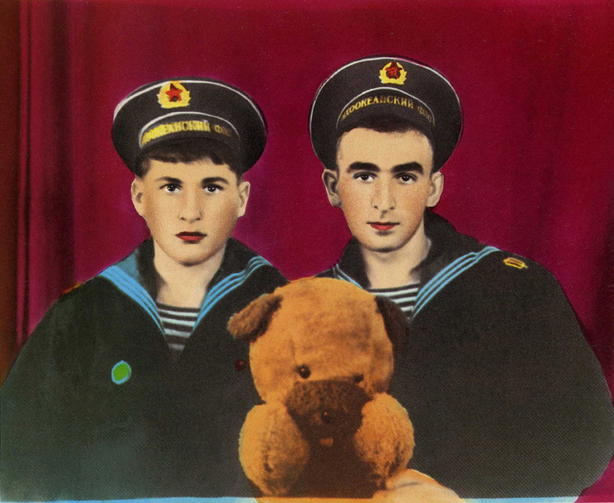



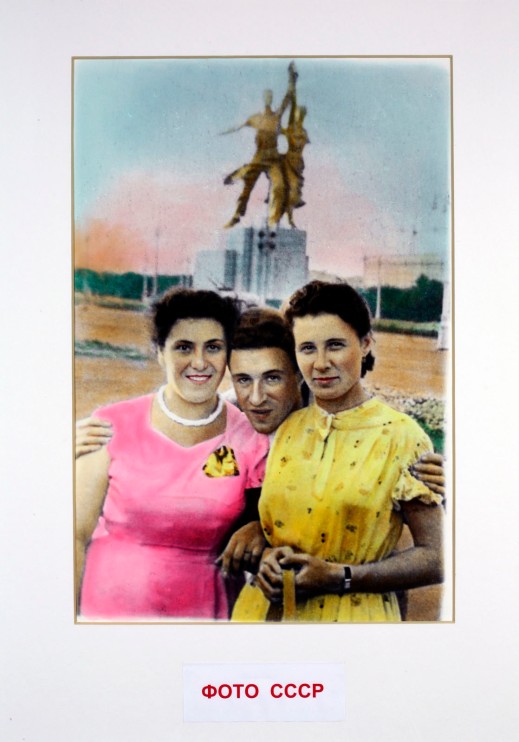
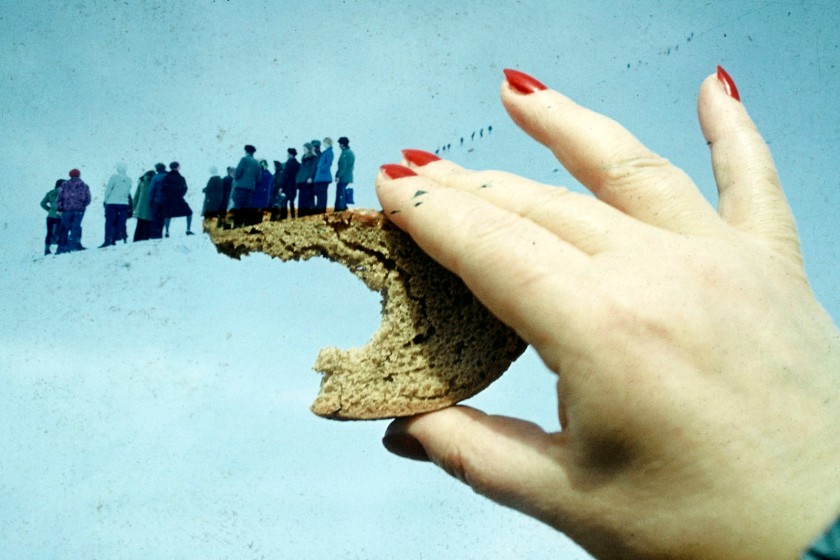
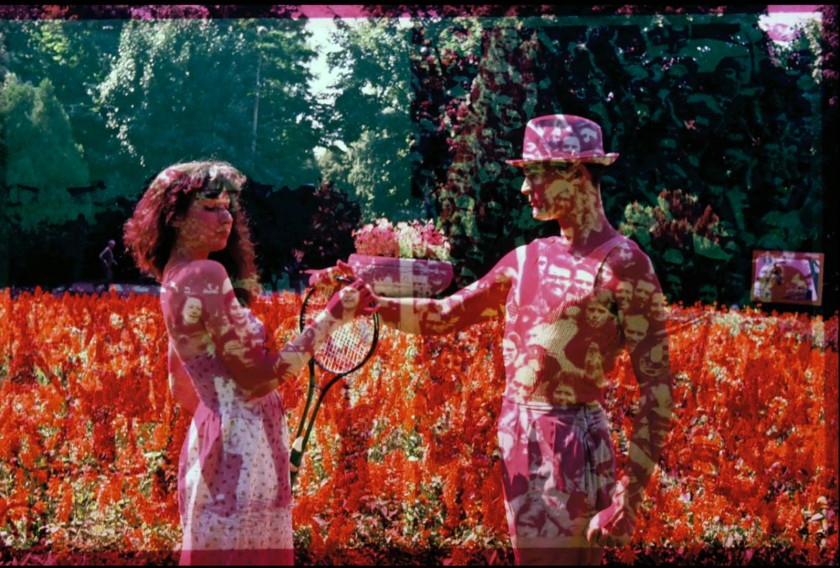


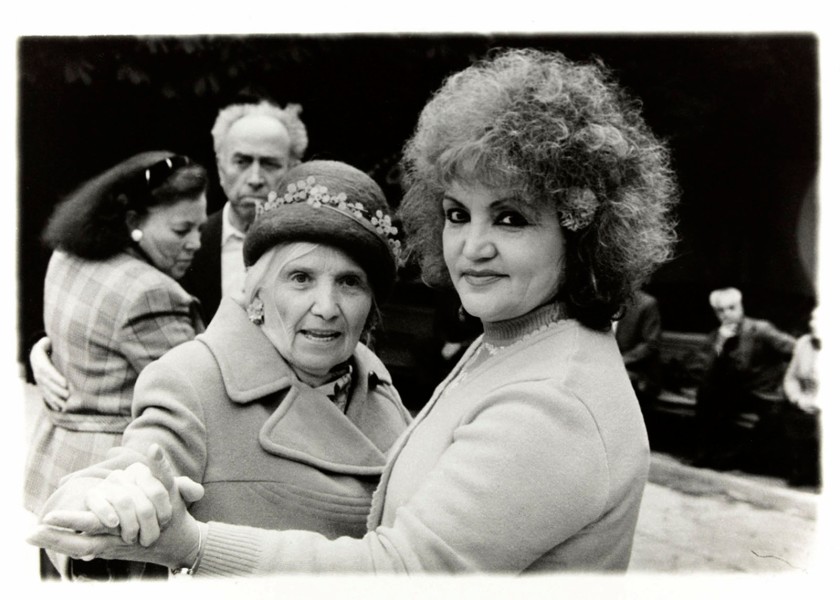


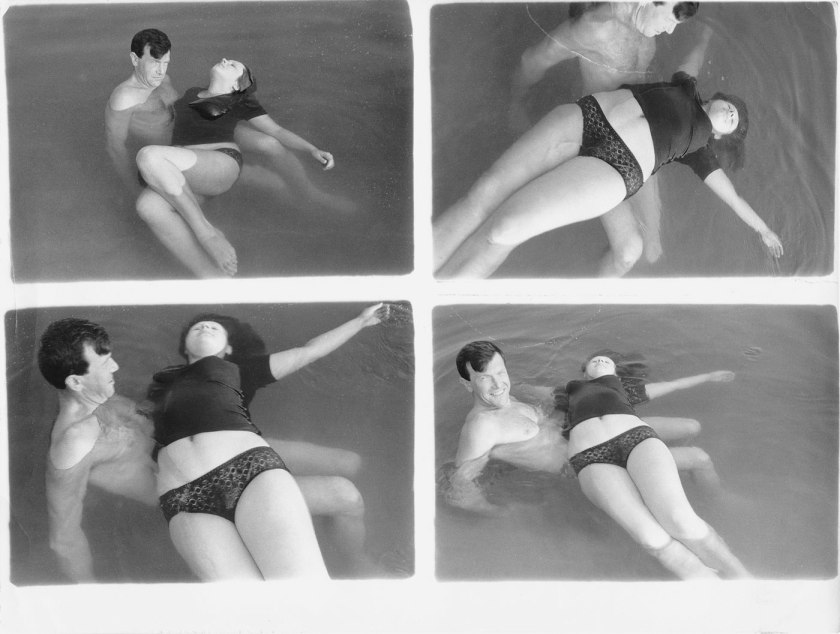

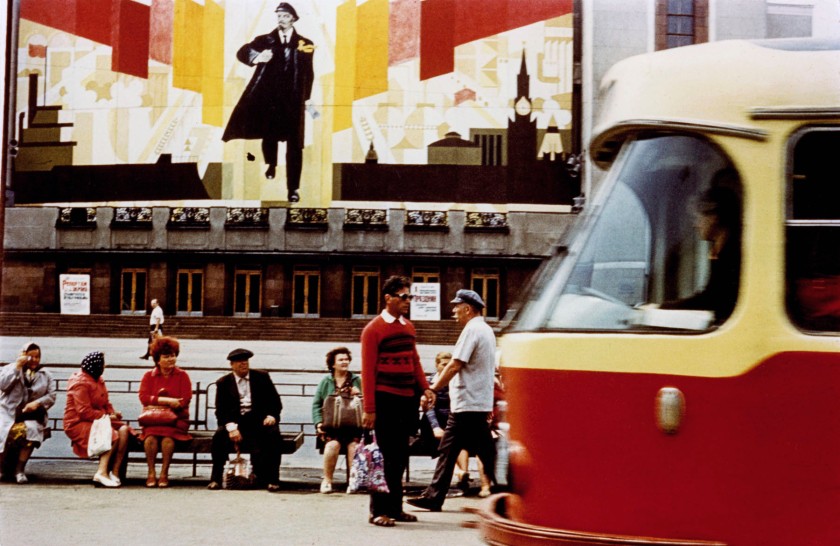


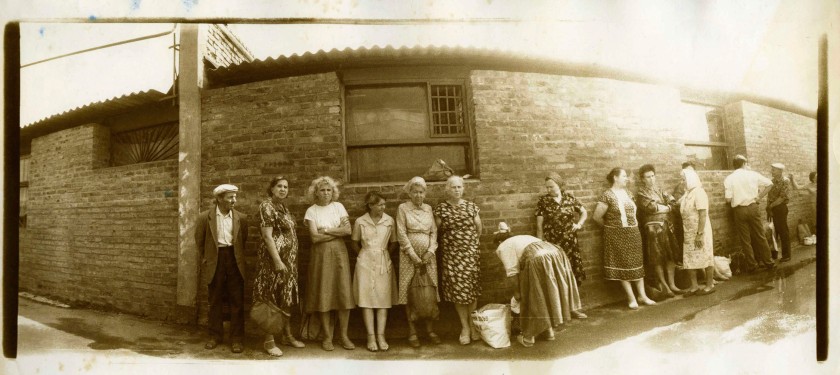
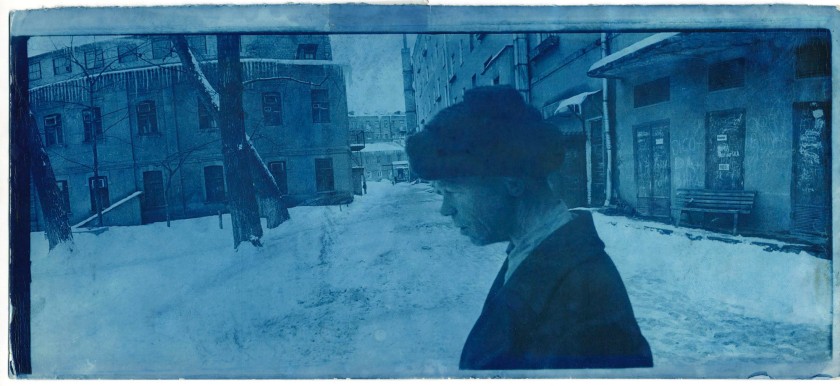
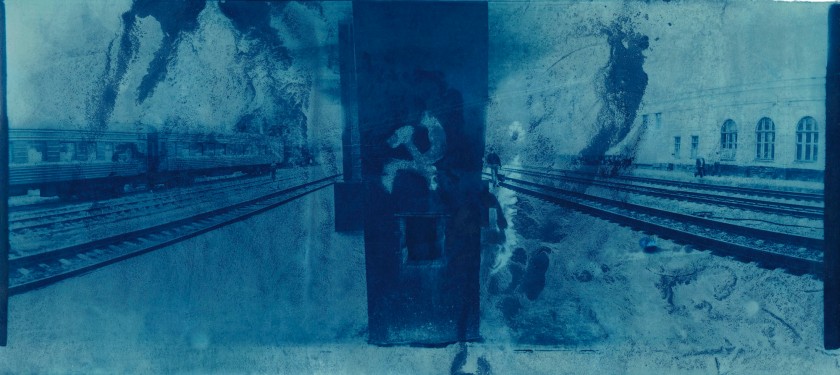


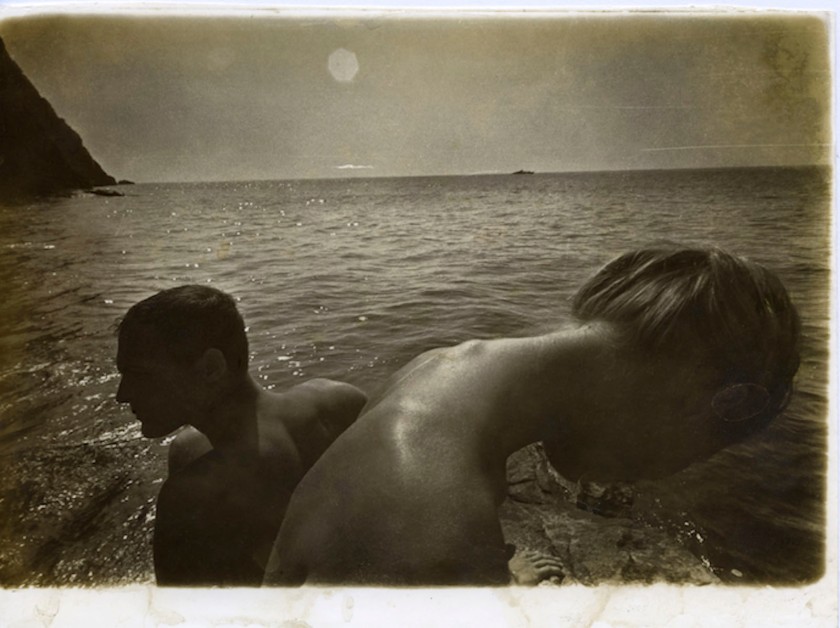

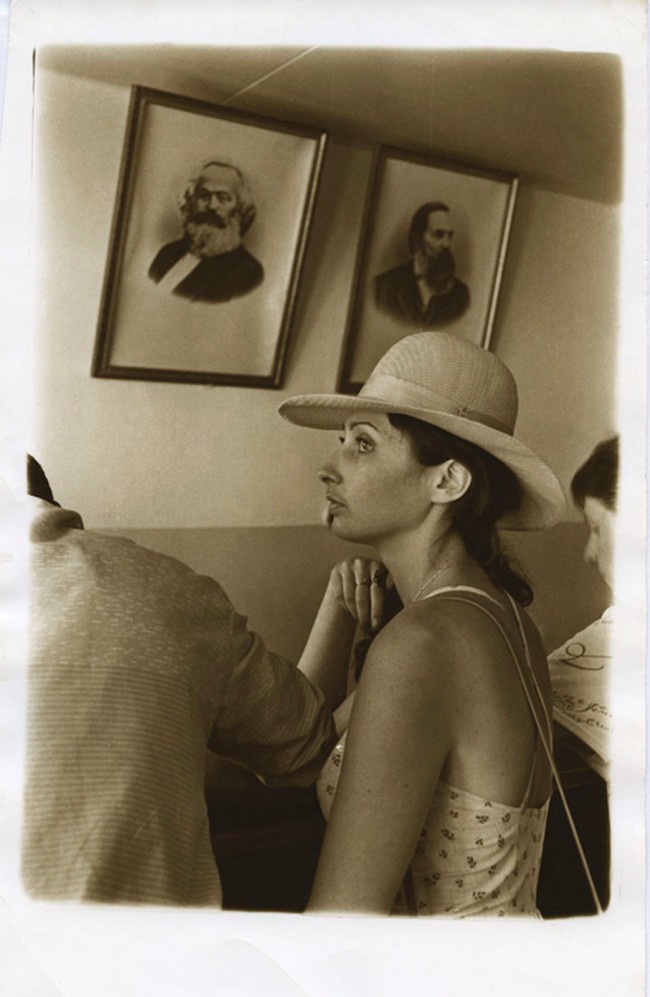
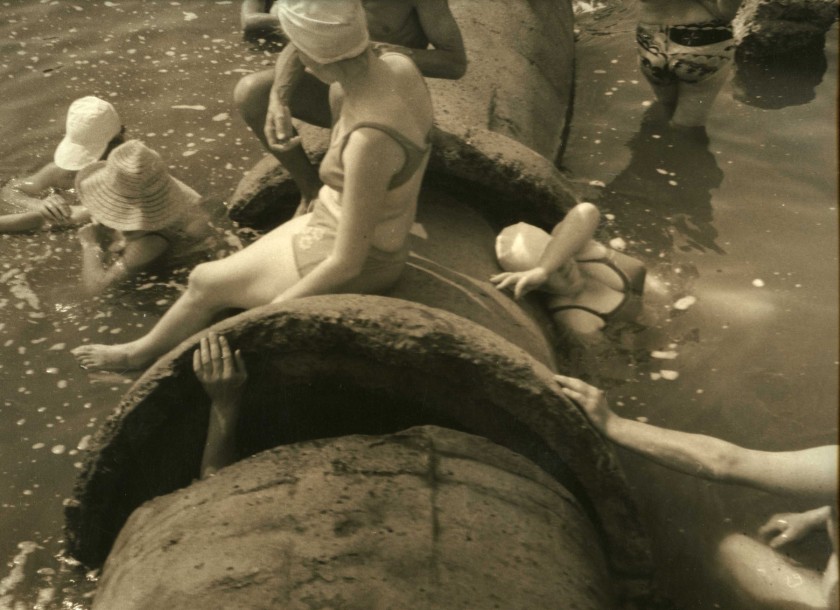
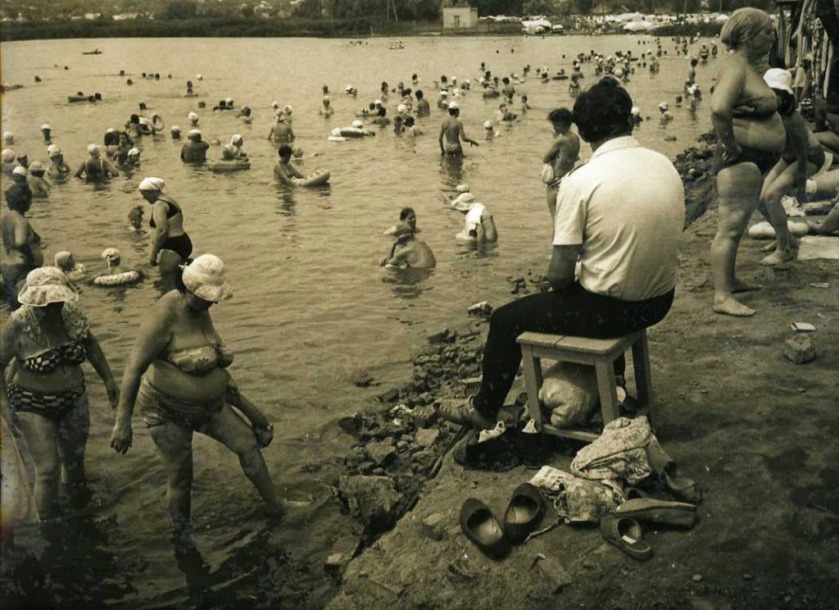
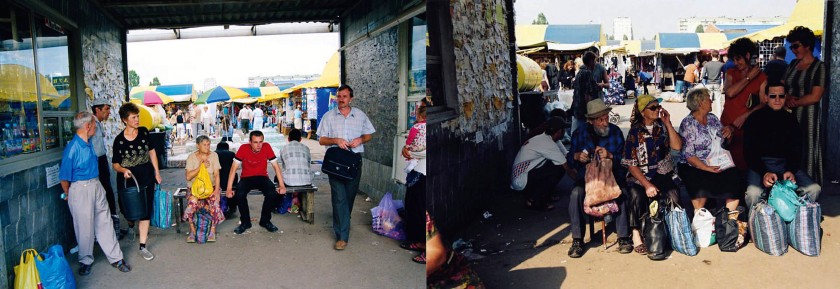
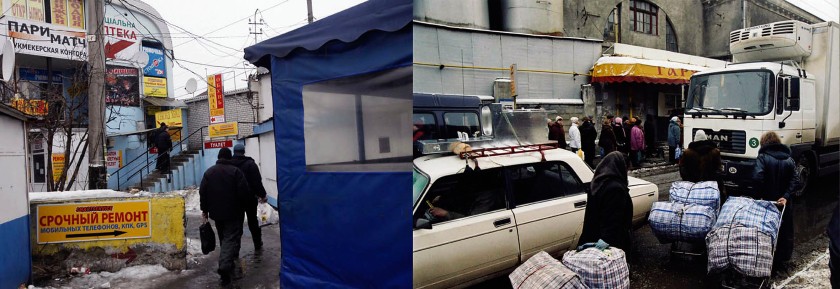
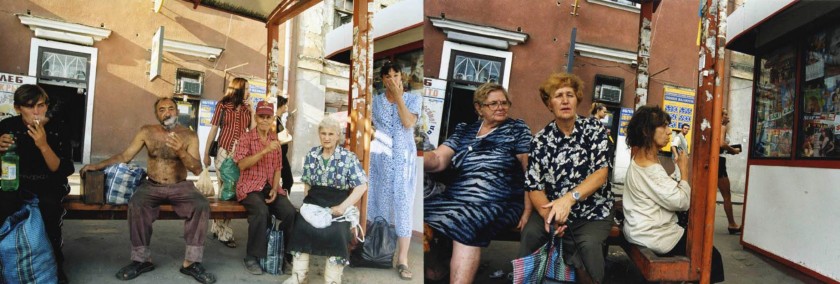
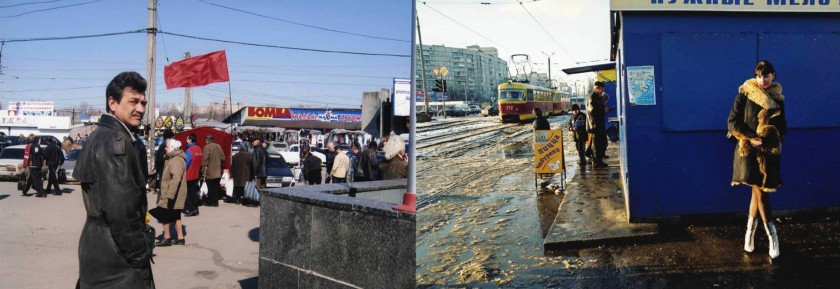
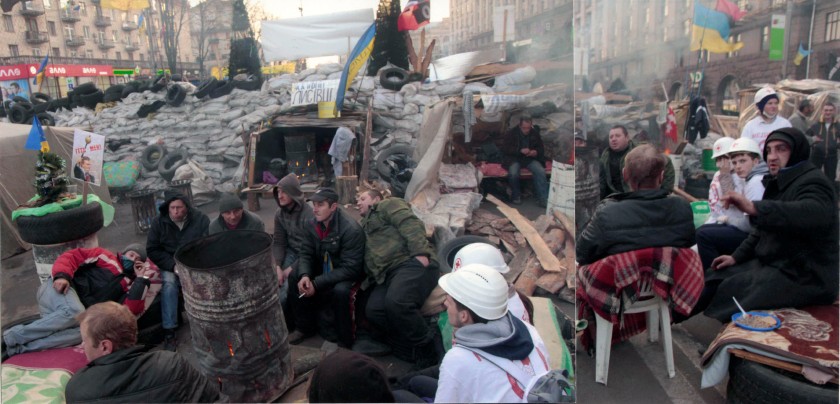






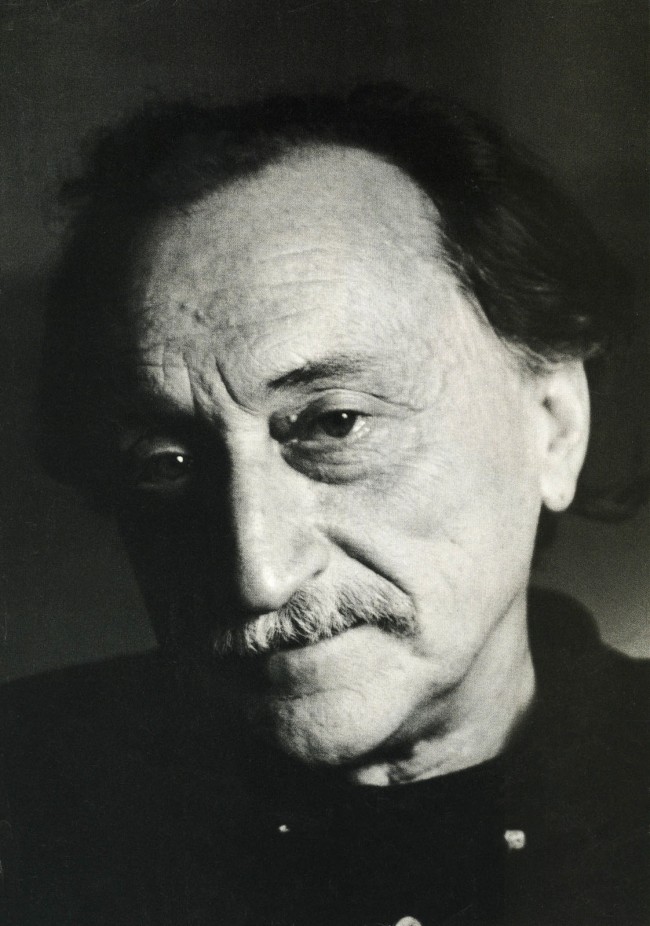









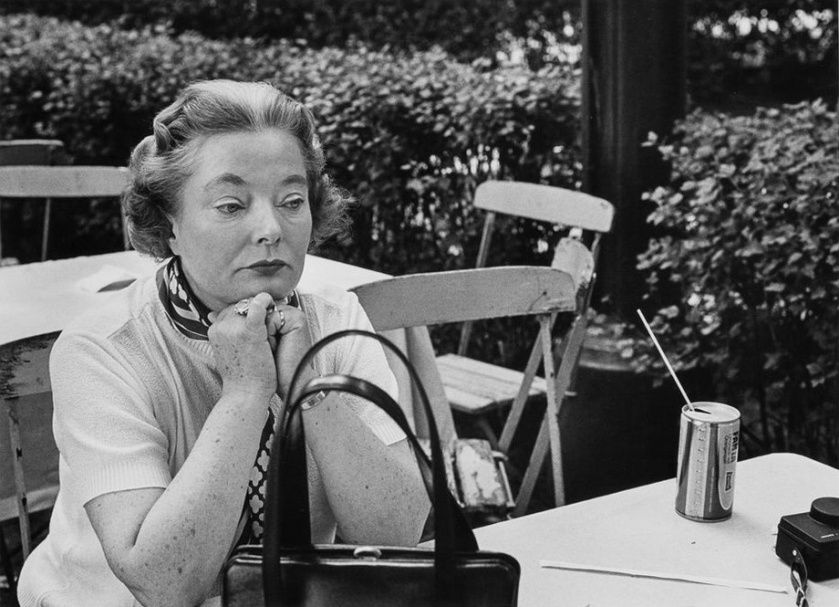


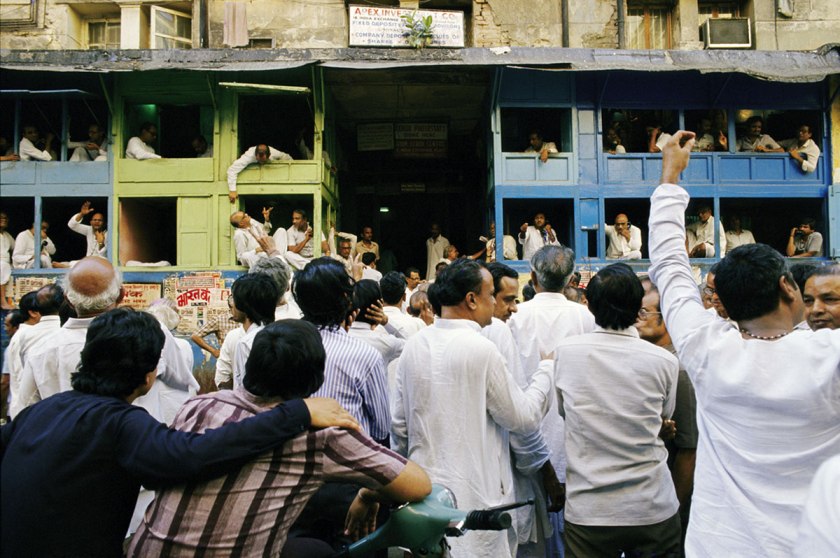



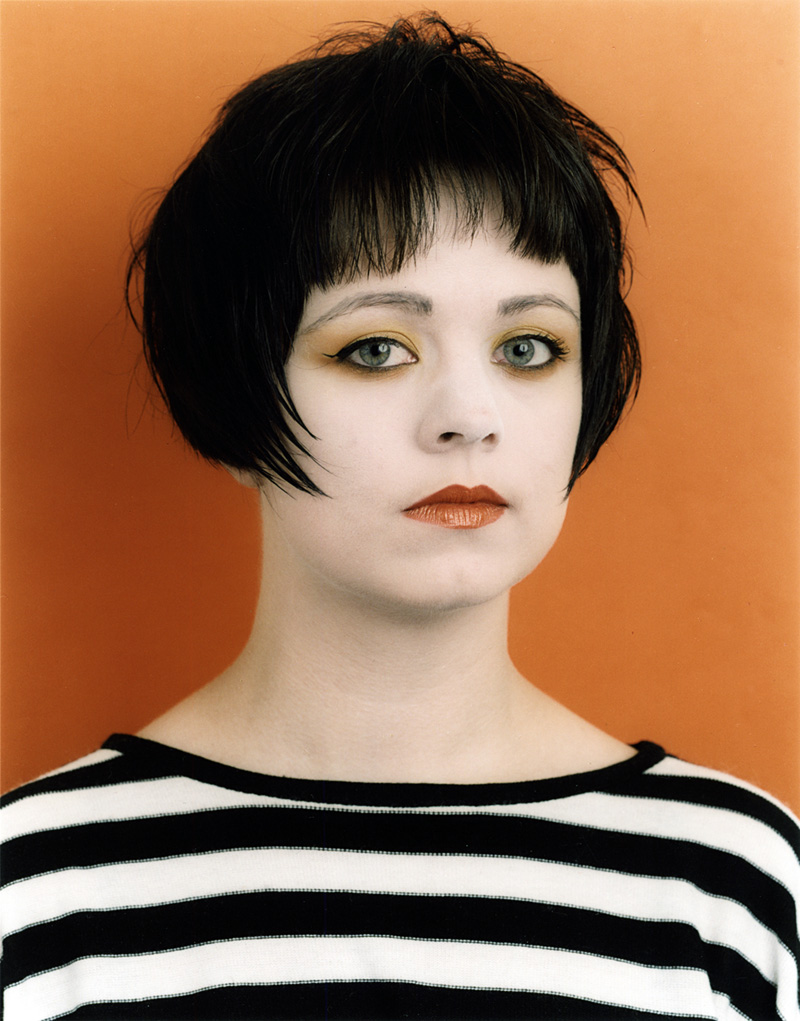




































You must be logged in to post a comment.